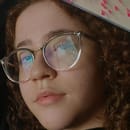You might have heard about ADHD before, but if you haven’t, let me give you a brief explanation of what it is. Attention Deficit Hyperactivity Disorder is, as the name says, a very common disorder that has symptoms such as inattentiveness, impulsiveness, hyperactivity, and other many things.
Since those indications of the disorder can affect anyone’s daily life, it’s important to find out if you have ADHD, so you’re able to begin treating yourself. The treatment isn’t difficult and can help you improve many areas of your life.
That being said, today we’ll understand more about the disorder and its symptoms, especially the inattentive type. For that, Her Campus Cásper Libero talked to Ana Paula Pissarra, a neuropsychologist that gave many insights on ADHD. Let’s hear from the professional!
WHAT EXACTLY IS ADHD?
According to Ana Paula, ADHD is a neurobiological disorder that begins at birth. “It never comes later. It appears because of something that happened during gestation, or it may be hereditary if there were cases in the family history”, she says.
The symptoms of ADHD are very defining. They are the base of the diagnosis and are related to executive functions, self-monitoring, and planning. Ana Paula explains: “They can present behavior problems, procrastination, and only work under pressure. They also have hyperfocus, which is completely focusing on something that they like, exaggeratedly, but not being able to focus on something they don’t feel pleasure doing”.
Because a lot of people with ADHD have trouble in the learning process, especially in school, the disorder is thought to be related to low intelligence, which is not true. “People with ADHD have average intelligence, or even very high above standard”, the neuropsychologist says.
We are not done! There are also three types of ADHD to keep an eye on. The Inattentive type, the Hyperactivity type, and the combined type. “The hyperactivity type deals with impulsiveness and agitation. The inattentive type is harder to notice since it doesn’t present the exaggeration, it’s more about not being able to focus. And the combined type brings the first two together: inattention and hyperactivity”, Ana Paula clarifies.
A CLOSER LOOK AT INATTENTIVE ADHD
Inattentive ADHD can be presented a little bit differently, as we saw before. This subtype of the disorder is much more about not being able to pay attention and having a hard time processing information. Ana Paula Pissarra explains that “the inattentive [patients] are more silent and slow”. “They also have trouble with long-term memory, because of the time that it takes for them to process information. They get lost in the execution of a task, which makes learning very tiring. It’s really hard for them to focus”, she emphasizes.
In general, inattentive ADHD appears the same way in children, teenagers, and adults. The difference, though, is that as the person gets older, they find ways to deal with it, like little tricks, especially for women. The neuropsychologist explains: “On men, the ADHD problems can be very affecting since they have a lot more difficulty with behavior and consistency matters. Women, on the other hand, usually learn to manage that more easily”.
Ana Paula also points out that parents must be watchful of the symptoms during childhood since the inattentive type is very silent, and hard to notice. That way, the child can begin the treatment at an early age and, maybe, eventually overcome the disorder.
DO I HAVE ADHD?
Okay, so now that you know a little more about ADHD, you may be wondering if you have it. First things first, let’s bring back what Ana Paula previously said: “ADHD cannot be developed later in life. It is neurobiological”. That being said, if you’ve never had ADHD, or never showed any symptoms, chances are you don’t have it.
The neuropsychologist explained how the diagnosis is done for young people: “It’s important to first look at the history of the person. For example, problems in school since childhood, and inattentiveness – which gets a lot worse in adolescence and adulthood. Other than that, they should’ve gone through a bunch of different professionals in their childhood, like therapists. If the person doesn’t have this history, then the diagnostic does not proceed”. She adds: “Sometimes, it’s a depressing process that gets confused with ADHD since they both have the same inattentiveness symptoms”.
Ana Paula also says that we are becoming more unfocused and distracted because of the internet and social media, especially after the lockdown. And though people cannot develop ADHD from that, she pointed out that whoever has the disorder will probably face a worsening situation regarding the symptoms.
WHAT TO DO NOW?
If you were diagnosed with ADHD, you’ll most likely begin the treatment with some medicines that will help you out. Besides that, the neuropsychologist says that it’s also helpful to practice physical activities and meditation: “There are a lot of studies that approach the mindfulness practice on ADHD, as it helps on staying focused, and reduce the anxiety of hyperactive.”
A nice exercise that will help with inattentiveness is to “choose one task to do completely focused, like taking a shower or eating a meal,” she finishes.
ADHD is a lot more complex than we think, and it can affect the lives of those who have it. This article is in no way a form of diagnostic, and if you suspect you have this disorder, you should look for a professional. Ana Paula Pissarra, the neuropsychologist interviewed, talks more about ADHD on her Instagram @paulapissarra_neuropsicologa. Make sure to check it out!



